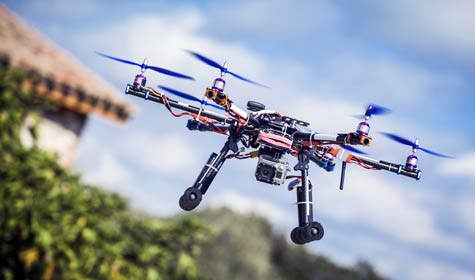The year ahead may be the one in which commercial drones graduate from novelty status to full use. The question is whether the sector already is in trouble.
USA Today and other sites report that the Federal Aviation Administration (FAA) has given the okay for Trimble Navigation Ltd., VDOS Global, Clayco and Woopert to use the flying devices to conduct aerial surveys, monitor construction sites and inspect oil flare stacks.
But these are not the first trials. In September, seven drone permits were also issued to film and video companies. The first, which came in June, went to BP Aero-Vironment, which was allowed to use drones to survey the North Slope in Alaska.
In November, Fortune highlighted questions facing the nascent sector. The piece referred to a Wall Street Journal story that said the “long-awaited” rules on commercial drones are likely to be restrictive and are “expected to be narrowly focused and stringent, keeping drones below 400 feet and within the operator’s line of sight.”
The high-level takeaway is that the domestic drone industry has by necessity developed before clear guidelines on how it would be administered were set. Fortune suggests that a lot of money has been invested before the principles had any definitive information on how the government proposed to handle the sector. Now, what is emerging is not making the domestic drone ecosystem feel very good:
Such limiting regulations would preclude drone use for highly-touted applications like pipeline inspection and large-scale crop monitoring. Beyond that, last week’s ruling in favor of the FAA means that drones of all sizes will be covered under the regulations. Photography drones weighing less than five pounds, such as the now ubiquitous DJI Phantom series quadrotor, will likely be regulated the same way as much larger, gas-powered drones like Boeing’s 40-pound ScanEagle, which is used by militaries and private industry for sophisticated missions.
Another sign that the industry is too far ahead of regulation can be found in this Network World story on PixiePath, a startup that is developing software for drone management. Bob Brown writes that the FAA has “taken a hard line” on drones and is moving slowly. That means that the company may be better off starting elsewhere:
Because of the FAA taking its time to outline rules, PixiePath could find its first big opportunities up North or overseas in what’s expected to be a multibillion commercial drone market before long.
MarketWatch’s Sally French is another voice of frustration on drone regulation:
Because of so much outcry over privacy, the FAA has implemented legislation that has been flawed and outdated. Commercial use of drones is completely banned, unless you file for a Section 333 petition with the Federal Aviation Administration, which usually takes a neither speedy, nor efficient, 120-days to process from the time you file to when it’s approved.
Commercial drone use doesn’t have as great a potential as the Internet of Things (IoT) or 3D printing. But it isn’t far behind. The category is inherently controversial, however, because of their high-profile military use and the visceral fear they generate. The sector will be hurt if technical, legal and regulatory development doesn’t move in sync, or near sync. The domestic drone industry sector, which has barely launched, seems already to be in trouble.
Carl Weinschenk covers telecom for IT Business Edge. He writes about wireless technology, disaster recovery/business continuity, cellular services, the Internet of Things, machine-to-machine communications and other emerging technologies and platforms. He also covers net neutrality and related regulatory issues. Weinschenk has written about the phone companies, cable operators and related companies for decades and is senior editor of Broadband Technology Report. He can be reached at [email protected] and via twitter at @DailyMusicBrk.




